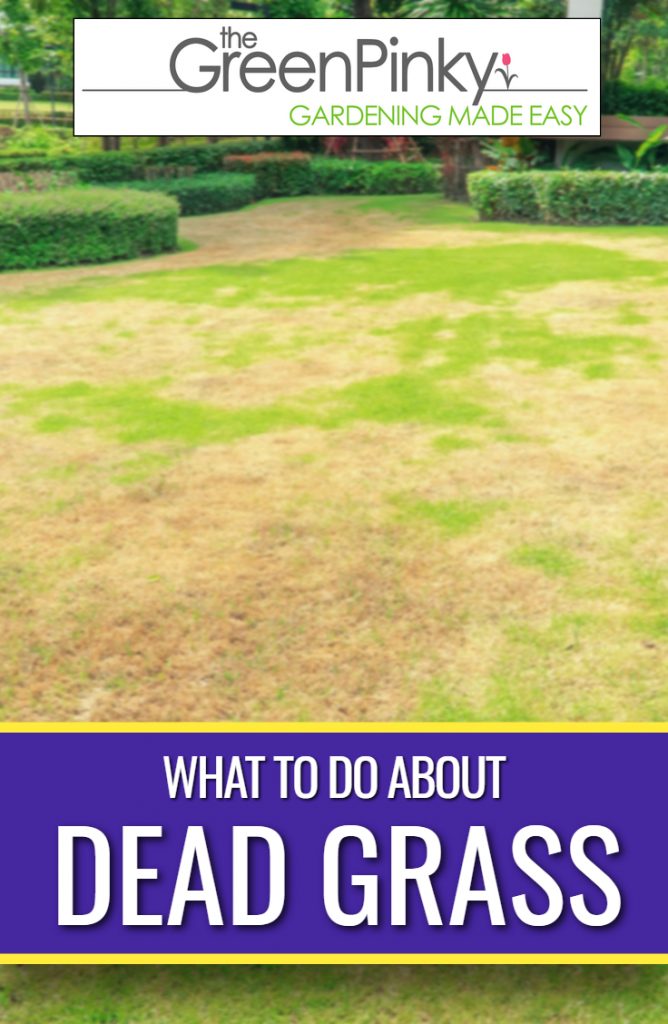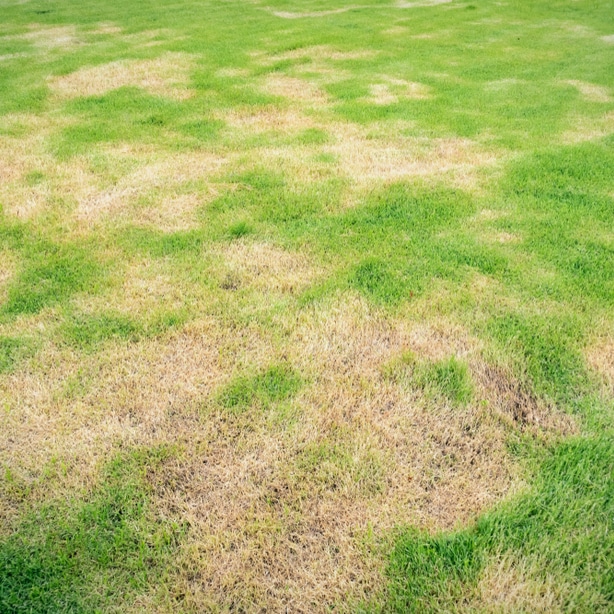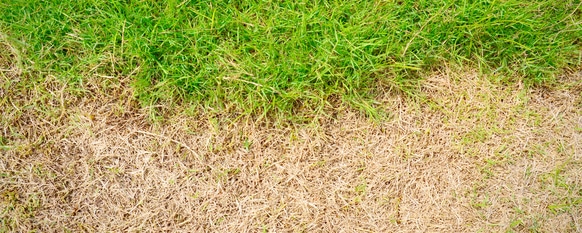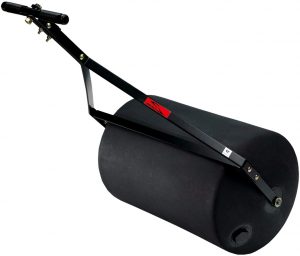As the warm weather comes to an end, you decide to take a well-deserved break from all the hard yard work you have been doing all season. Before you prepare your plants for the colder months, you decide to sit back and enjoy the view of your property.
But just as you have settled into a comfortable chair, something suddenly catches your eye. You sit up at attention.
There it is: A dreaded patch of brown mars your view. You wonder, is it dormant grass or dead grass? It is time to brush off your detective skills.
Two very different things that can be nearly indistinguishable from one another. This fact has caused many homeowners to make assumptions. And those assumptions led many of them to take action that wound up individual plants and, potentially, their lawns as a whole.
Knowing whether your grass is dead or dormant will save you many heartaches, headaches, and backaches.
Make sure to also check out our pampas grass growing guide for more information about how to grow this beautiful ornamental grass.
Today, you will learn how to save yourself a lot of time and pain.
The information you’ll find here includes:
- How to tell if plants are dead or dormant
- Causes of dead grass
- Reasons your lawn to goes dormant
- How to remove dead patches
- How to deal with dead spots or patches in an otherwise healthy yard
Read this article and you’ll know how to tell if your healthy lawn is playing possum.

The Difference Between Dead and Dormant Grass
It’s a common misconception that a brown lawn is dead. This could not be further from the truth. Let’s look at the reasons for dormancy, causes of dead grass, and how to tell the difference between them.
What Happens When Your Lawn Goes Dormant?
Dormancy is a natural, healthy defense mechanism. A dormant lawn is merely protecting itself from conditions that could compromise its survival.
When plants dormant, the blades will turn brown and die.
But how is dying a defense mechanism?
Well, although the dormant grass turns brown and dies, the crown and the plant’s root system remain alive in the soil.
The crown is the most essential part of your grass. It is the thick, whitish part that grows at the soil level. The crown is where the blades and root system meet. It is the foundation of a healthy lawn, as all growth originates in the crown. If the crown dies, then the plant is dead.
A dormant lawn turns brown because the blades are not essential to survival. The crown and the root system, however, are indispensable to the plant’s continued life. Once the blades have died, the crown and the root system are able to conserve water and nutrients for themselves. This helps both to survive.

Reasons Your Lawn Will Go Dormant
Dormancy differs for warm-season and cool-season grasses.
Cool-Season Grass
Cool-season vegetation goes dormant during extended periods of drought and extreme summer heat. It does not use water or nutrients as efficiently as its warm-season counterpart. As such, it requires more water to survive.
There is not enough water for active growth during periods of drought and heat. Dormancy protects plants from a lack of water by reducing the amount needed to stay alive.
Cool-season plants do not go dormant during winter, although it may appear that way. Instead, they enter a suspended state of growth and form complex sugars that act as a natural antifreeze. Although it sounds like dormancy, this is different.
Warm-Season Grass
Warm-season vegetation lives up to its name. Because it uses water and nutrients efficiently, it can grow during extended periods of heat and drought. It will continue growing with very little water, as long as the temperature is suitable.
Warm-season turf is averse to colder weather conditions and climates. It will enter dormancy when the temperature of the soil drops below 65℉. For moderate climates, this usually occurs sometime in November.
Dormancy is proof of the efficient use of water and nutrients. Warm-season grass roots conserve water and nutrients through the winter months because they are not readily available during that time. This ensures survival through the cold season.
The Effect of Thatch on Your Lawn
While having some thatch on your property is not bad, having too much of it can cause real problems. In some cases, it can cause your grass to become dormant.
Thatch is a layer of dead and living material that builds up between the soil and the blades. Contrary to popular belief, grass clippings on your lawn do not cause thatch buildup.
A thin layer of thatch can help plants retain water and protect the soil from severe temperature fluctuations. Both of these will help keep the turf healthy.
However, if the thatch grows too thick, it can smother plants. It will prevent the free flow of water, air, and nutrients. Thick layers of thatch can cause water to pool on your lawn and drown all living things.

At its worst, a thick layer of thatch will not allow grass roots to reach the soil. This, in turn, causes the roots to grow entirely in the thatch, which will leave your grass vulnerable to drought, overwatering, and other forms of stress.
These stressors can cause plants to go dormant at first. However, they will eventually die if the thatch problem is not taken care of.
Causes of Dead Grass in Your Lawn
Let’s take a look at some of the conditions that can cause your lawn to die.
Thatch
We already talked about what this culprit is capable of doing, so I will not repeat the information here.
Drought
Drought will force plants to go dormant. However, all living things need water to survive. So if the drought lasts too long, the plants will perish.
During drought conditions, lawns will go dormant after 2 to 3 weeks. However, most will only survive for 4 to 6 weeks without water. After that, water reserves are depleted, and plants will die.
Poor Mowing Practices
Mowing your lawn too frequently or cutting it too short can cause undue stress for your turf. It will likely dry out, turn brown, and eventually die.
Remember that, ideally, you’re only cutting off the top ⅓ of the blade whenever you mow. For healthy plants, you’ll want to look at the specific heights to mow to. Generally speaking, you’ll want to keep your grass between 2 ½ and 3 inches tall.
Watering Too Much or Not Enough
A healthy lawn requires an inch of water per week for maximal growth and healthy root systems, even in the winter.
If your plants do not receive enough water from rainfall, you need to get the hose out or turn on your sprinklers.
Insects
Several improper maintenance practices can cause the presence of pests in your lawn. Plants that are infested with pests have weakened roots and pull out of the ground easily.
You’ll find pests in areas that have been overwatered or over-fertilized.
Fungi
The presence of fungi can create patches and spots of bare soil. It can also be an indication of disease.
Fungi will appear in environments with excessive moisture, little sunlight, and poor air circulation. Watering your property too frequently in shaded areas can cause the growth of fungi.

Weeds
Weeds are opportunistic and invasive plants seeking to rob your healthy, green turf of the air, water, and nutrients it needs to survive. If weeds are allowed to grow unchecked, they can kill the plants you want to have on your property.
The death of annual weeds like foxtail and crabgrass is a natural process that can cause spots and patches of dead grass to appear on your lawn. You can avoid this problem with proper lawn-care practices.
Debris
Debris can be anything from leaves to toys left by your kids. Anything that prevents your grass from getting sunlight, water, or nutrients can create brown spots.
The same can be said if the foot traffic from people and pets is too much for your yard to take. The grass will wilt and eventually die if a particular path is walked on too often.
If you have to walk out to the shed in your backyard to get to the lawnmower, don’t take the same route every time.
Salt Damage
Soil contains a small amount of salt naturally. However, large quantities of salt can be a lawn’s death sentence.
Salt strips moisture from the soil. This, in turn, prevents the grass from receiving a sufficient amount of water and oxygen to withstand the winter weather. It leaves the plants dehydrated and will eventually cause them to die.
If you experience extremely cold weather, there is a good chance that your roads are de-iced with salt. If that salt winds up on your property, it can kill the vegetation.
Salt can also wind up on your property if you live on the coast. Salty ocean water can be spread by periods of heavy coastal rain or strong storm surges.
Dog Urine
Dog urine is full of nitrogen, which is an essential nutrient. However, dogs are creatures of habit. As such, they tend to frequent the same spot whenever they have to go to the bathroom.
Repeated peeing on the same spot can kill vegetation. The nitrogen in dog urine can burn the lush, green grass you like.
Too much of a good thing can be a bad thing.

How to Tell the Difference Between Dead and Dormant Grass
When people talk about reviving grass or bringing it back from death’s door, they are actually referring to rejuvenating dormant vegetation. If you think about it, dead grass is… dead. It’s not coming back. But you can fix lifeless plants if they are not truly dead in the first place.
That’s why determining if your lawn is dormant or beyond salvage is so important.
There are many different ways to find out if you have a dying lawn or a dormant one. Generally, plants uniformly enter a state of dormancy. If you see an area of yellow or brown grass surrounded by lush green vegetation, then you likely have a problem.
Here are a few different ways to differentiate between a sleeping yard and a dead one.
The Tug Test
This is the easiest way to determine whether your brown patch is dead or alive. Just grab a small patch of the brown part and tug at it. A dead plant will offer little resistance and pulls easily from the soil. Dormant grass will put up a bit of a fight on its way out of the ground.
Once you get the grass out of the earth, inspect the roots. If they are withered and gray, then your yard is too far gone. If the roots appear white, the grass is only dormant.
Check Your Irrigation System
Your yard can go dormant in areas that do not receive enough water. Check that your irrigation system is properly watering that section of your property.
If your sprinkler system is doing its job, then you probably have a more serious problem.
Water Your Lawn
Not everyone has an irrigation system set up. If you don’t, don’t worry. You can determine whether the turf is dead or dormant by watering it over the next few days. Dormant brown grass will revive and spring back to life while dead grass stays brown.

How to Get Rid of Dead Grass
Here are the steps to follow to get rid of those undesired brown spots.
Step 1: Create a Plan
To get rid of dead vegetation, whether it be a single brown patch or a whole brown lawn, you’ll need to know what caused it to die in the first place.
Perform a soil test to determine whether the pH level is suitable for healthy growth. Get rid of any pests that damage the root system. Ensure that all areas are receiving enough water for optimal growth conditions. Keep people and pets off the property as you determine the cause of your problem.
Step 2: Treat the Affected Area
Spray a non-selective herbicide over the affected area to ensure that there are no weeds. The grass is already dead, so you’re not going to hurt it.
Allow the herbicide to sit for a week to ensure that any unwanted vegetation is taken care of. You want a blank slate.
Step 3: Dethatch the Lawn
Remember, a little thatch can be a good thing. But when you are dealing with excess thatch, you’ll need to use a vertical mower or a dethatching rake to remove it.
If the thatch is thicker than ¾ of an inch, then it’s got to go. It will prevent nutrients from reaching the roots of the new grass you’re trying to grow.
Step 4: Till the Soil
The soil needs to be aerated. Tilling the soil to a depth of 4 to 6 inches will incorporate any dead vegetation into the earth. This will not only nourish the soil but also keep you from having to rake the brown stuff from the surface of the lawn.
If you’d like to increase the fertility of the soil further, you could add a layer of organic compost and till it into the ground.
Step 5: Plant Seed or Lay Sod
You already checked your soil’s fertility in Step 1. If your soil needed nutrients, you took care of that with the compost in Step 4.
Now it’s time to bring new life to your lawn.
If using grass seed, spread it evenly over the prepared area. Check to ensure good seed to soil contact and penetration. Once you’ve seeded the area, spread a thin layer of soil over the top to help with germination.
If you’re laying sod, make sure that each piece connects firmly with its adjacent pieces. Ensure that the root sections of each piece have solid contact with the soil.
Step 6: Roll ‘Em Up
Whether you seeded or sodded the ground, you need to break out your roller and go over it. This is a step that is often overlooked, but it is essential for establishing the root system.
A roller ensures good seed-to-soil or sod-to-soil contact and helps to firm up the earth.
Step 7: Care for the Lawn
You’ll want to keep the newly seeded or sodded ground damp but not saturated. Soggy conditions are not good for new growth that is beginning to establish roots.
You’ll need to water your yard daily for a week or two and gradually scale back on the irrigation.
A few things to keep in mind in the beginning:
- Don’t use your lawnmower or other equipment as it can cause ruts and damage the new root systems.
- Don’t mow the new growth until it has become well above 3 inches tall. This will ensure the roots are healthy and established.
- Until the roots have taken hold and the grass begins to grow, keep foot traffic to a minimum.
Dealing With Dead Spots
What if you only have a few brown spots on your property?
If that’s the case, then following the preceding instructions would be a bit of overkill. Instead, follow these simpler steps to revive your yard.
Step 1: Rake the Spot
Raking the area will remove excess thatch, debris, and rocks.
Step 2: Moisten the Soil
Water the soil until it becomes damp. But don’t overwater the area.
Step 3: Cut a Border Around the Spot
Using a garden trowel, cut a border around the spot. You’ll need to penetrate the earth between 3 and 4 inches deep around the dead grass.
To ensure you’re reaching a proper depth, dig the trowel into the ground to the hilt.
Step 4: Pry Up the Area
You’ll need a square shovel for this step.
Insert the edge of the blade into the border you cut out and pull the shovel back. This will begin lifting the spot out of the ground.
As the spot lifts, inch the blade forward across it and pull up the root system. Pull back on the handle until the blade is lying parallel to the earth.
This is necessary to sever all roots so that they may be removed from the ground.
Repeat this process until you have detached the dead spot’s entire root system.
Push, lift, repeat…Push, lift, repeat…

Step 5: Remove the Spot
Once the roots are severed, you should be able to lift the spot out with your hands or a shovel. Rake off the excess soil that is still attached to the root system. Place the dirt back into the excavated area.
Step 6: Fill in the Hole
Spread topsoil into the hole until it becomes flush with the ground that surrounds it.
At this point, you can plant new seed or resod the spot. Use proper lawn care practices to ensure the establishment of healthy roots.
Mark the work site so that you don’t accidentally go over it when you mow the healthy growth around it.
Now you know how to determine if your yard is simply taking a break or is gone for good. Remember that preventative maintenance is the best way to keep your property green and healthy.



